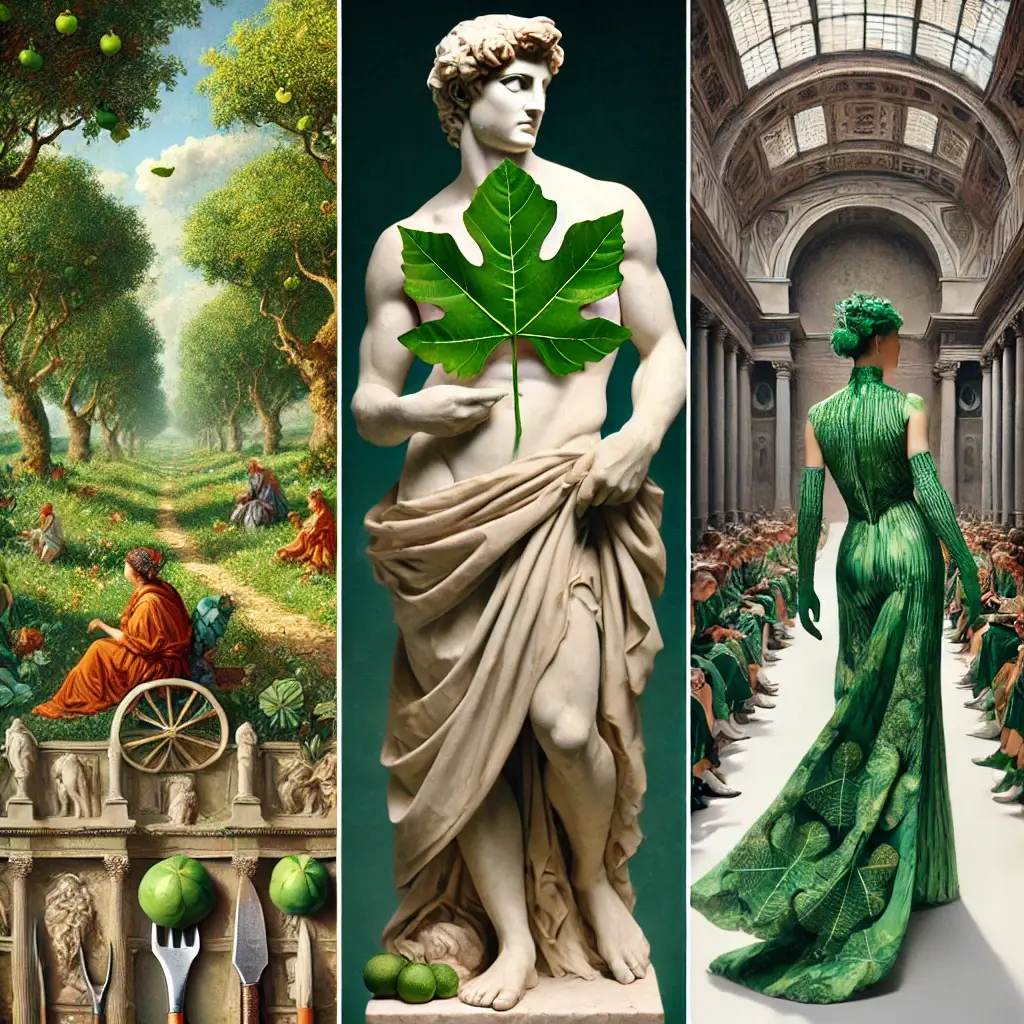Where Fig Leaves First Came Into Fashion: Top 7 Historical Facts
Table of Contents
Where Fig Leaves First Came Into Fashion:
Ever wondered about humanity’s first fashion statement? While today we browse endless racks of clothing, our fashion journey began with something remarkably simple: the fig leaf. This iconic symbol of modesty has shaped cultural narratives for millennia, and its story is more fascinating than you might think. As a fashion historian specializing in ancient clothing customs, I’ll take you through the surprising origins and evolution of this foundational piece of human attire.
The Cultural Significance of Fig Leaves
The fig leaf’s journey from garden to wardrobe represents one of humanity’s earliest encounters with fashion consciousness. This simple plant transformed from mere foliage into a powerful symbol that has endured through art, literature, and religious traditions. Its influence extends far beyond its practical origins, making it a fascinating study in how fashion and cultural values intertwine.
The Origin Story

The earliest documented use of fig leaves as clothing dates back to ancient Mesopotamian civilizations, though its symbolic significance gained prominence through Biblical narratives. Archaeological evidence suggests that various societies independently discovered the practical benefits of fig leaves: they were large, readily available, and provided adequate coverage. The leaves’ natural shape and texture made them particularly suitable as primitive garments.
Why Fig Leaves Became the Choice Covering
Several practical and cultural factors contributed to the fig leaf’s popularity as early clothing:
- Size and Shape: Fig leaves are naturally large and broad, providing effective coverage
- Availability: Fig trees were abundant in regions where early civilizations developed
- Durability: The leaves are relatively thick and sturdy compared to other foliage
- Cultural Significance: Religious and mythological associations enhanced their importance
Historical Documentation and Archaeological Evidence
Archaeological findings have revealed ancient artwork and texts referencing fig leaf garments across various cultures. Egyptian hieroglyphs, Greek pottery, and Roman sculptures all feature fig leaves in different contexts, suggesting their widespread use and cultural significance throughout the ancient world.
The Fig Leaf in Art History
The Renaissance period marked a fascinating turning point in the fig leaf’s fashion history. Artists and sculptors began using bronze or marble fig leaves to censor classical nude sculptures, creating what art historians now call the “fig leaf campaign.” This practice became so widespread that many ancient sculptures were permanently modified to accommodate these modest additions.
Modern Cultural Impact
Today, the phrase “fig leaf” has evolved beyond its literal meaning to represent:
- A symbol of modesty in fashion and art
- A metaphor for minimal or token covering
- An enduring motif in fashion design and artistic expression
- A reference point in discussions about clothing and social norms
Legacy in Contemporary Fashion
Modern designers continue to draw inspiration from the fig leaf’s historical significance. Its shape and symbolism appear in:
- Avant-garde fashion collections
- Sustainable clothing initiatives
- Artistic jewelry designs
- Pattern and print motifs
Conclusion
The fig leaf’s journey from nature’s wardrobe to cultural icon demonstrates fashion’s deep roots in human civilization. Its enduring influence reminds us that even the simplest garments can carry profound cultural significance. As we continue to evolve in our fashion choices, the fig leaf remains a fascinating testament to where it all began.
FAQs
When did fig leaves first appear in historical records? The earliest documented references appear in ancient Mesopotamian texts, though their use likely predates written history.
Were fig leaves actually practical as clothing? While not ideal by modern standards, fresh fig leaves provided adequate temporary coverage and were readily available in warm climates.
How did the fig leaf become such a powerful symbol? Its prominence in religious texts and classical art elevated it from simple covering to cultural symbol.
Are fig leaves still used in any modern fashion contexts? While not used directly, their shape and symbolism continue to inspire contemporary fashion designers and artists.



